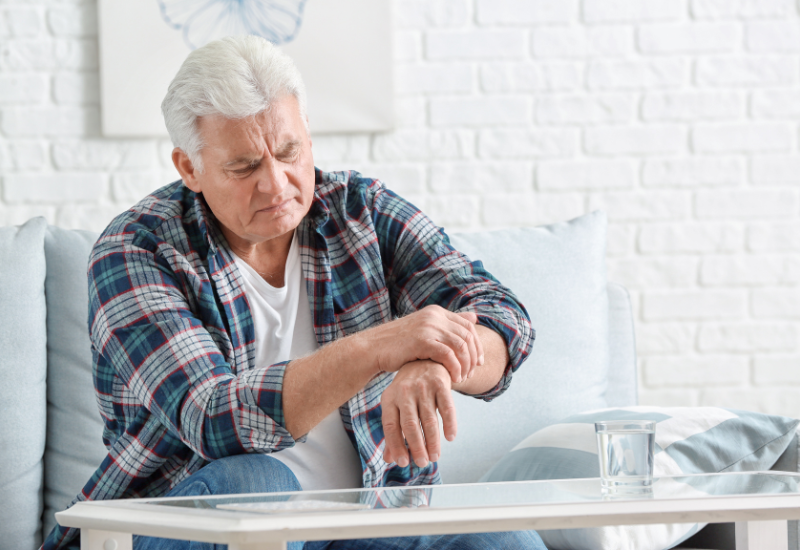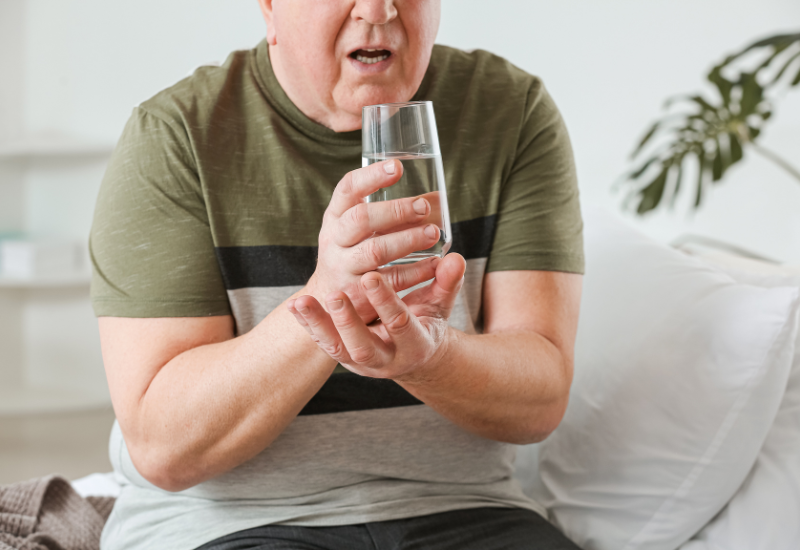Parkinson's Disease & Movement Disorder

Our Services
Let's Get In Touch
Understanding Parkinson’s Disease: A Guide for Patients

Parkinson’s disease is a brain disorder that affects how we move. It happens when certain nerve cells in the brain, called dopamine-producing neurons, start to die. This leads to a shortage of dopamine, a neur0-chemical that helps control movement. As a result, people with Parkinson’s may experience a variety of movement and non-movement symptoms.
Symptoms of Parkinson’s disease can vary from person to person, but they generally fall into two categories: motor symptoms and non-motor symptoms.
Motor Symptoms
- Tremors: Many people notice shaking in their hands, fingers, or sometimes in their legs. This shaking often occurs when the person is resting comfortably.
- Bradykinesia: This term means slowness of movement. People with Parkinson’s may find it hard to start moving or may move more slowly than before.
- Rigidity: Stiffness in the muscles can make it hard to move, and this can cause pain and discomfort.
- Postural Instability: Many individuals experience balance problems, making them more likely to fall.

Non-Motor Symptoms
Parkinson’s disease can also cause non-motor symptoms, including:
- Cognitive Changes: Problems with memory, attention, and thinking can occur as the disease progresses.
- Mood Changes: Many people with Parkinson’s may feel anxious or depressed.
- Sleep Problems: Issues like trouble falling asleep or waking up often during the night are common.
- Autonomic Symptoms: This can include changes in blood pressure, sweating, and digestive issues.
Diagnosing Parkinson’s disease usually involves several steps:
- Medical History: Your doctor will ask about your symptoms, medical history, and family history of neurological disorders.
- Neurological Exam: A physical examination will assess your movement, balance, and coordination.
- Response to Medication: If your symptoms improve with Parkinson’s medications, it can support a diagnosis.
- Imaging Tests: Sometimes, doctors may use MRI or CT or PET scans to rule out other conditions.
Parkinson’s disease is often described in five stages, which help understand how the disease progresses:
- Stage 1: Symptoms are mild and usually affect only one side of the body. Daily activities are not significantly impacted.
- Stage 2: Symptoms worsen and affect both sides of the body. Balance issues may start to appear.
- Stage 3: Balance problems become more serious, and falls are more likely. Daily activities may require more effort.
- Stage 4: Symptoms are severe, and individuals may need help with daily tasks.
- Stage 5: The advanced stage of the disease. Individuals may be unable to stand or walk without help.
While there is currently no cure for Parkinson’s disease, many treatments can help manage symptoms:
1. Medications: as advised by the neurologist
2. Non-Medical Therapies
Physical Therapy: A physical therapist can help improve strength, balance, and mobility through tailored exercises.
Occupational Therapy: Occupational therapists assist with adapting daily activities to make them easier.
Speech Therapy: This helps with communication and swallowing difficulties.
Nutrition: A balanced diet can support overall health and help manage symptoms.
3. Surgical Options
In some cases, especially when medications aren’t effective, surgical options like deep brain stimulation may be considered. This involves placing electrodes in specific parts of the brain to help control symptoms.
Adopting a healthy lifestyle can make a significant difference in managing Parkinson’s disease:
Regular Exercise: Activities like walking, swimming, or yoga can improve mobility, balance, and overall well-being.
Healthy Eating: A nutritious diet that includes fruits, vegetables, whole grains, and lean proteins can support health and energy levels.
Stay Socially Active: Engaging with family, friends, and support groups can reduce feelings of isolation and improve emotional health.
Establish Routines: Having a daily routine can help manage symptoms and make tasks easier.
Living with Parkinson’s disease can be challenging, but understanding the condition can help. Here are some important points to remember:
Mental Health Matters: It’s essential to address feelings of anxiety or depression. Talking to a mental health professional can be very helpful. Connecting with others who understand your experiences can provide comfort and advice. Regular check-ups with your healthcare provider are important to monitor the disease and adjust treatments as necessary. Be open about your symptoms and any new challenges you face.
Conclusion
Parkinson’s disease is a complex condition that affects many aspects of life. While there is currently no cure, effective treatments and lifestyle changes can help manage symptoms and improve quality of life. Working closely with healthcare providers, engaging in healthy habits, and seeking support can make a positive impact. With the right approach, many individuals with Parkinson’s can continue to live fulfilling and active lives.
FAQ's
Regular exercise is crucial for maintaining mobility, balance, and overall health. Activities like walking, dancing, yoga, and strength training can improve physical function and quality of life.
Cognitive behavioral therapy (CBT), mindfulness practices, and support groups can be effective. Engaging in social activities and maintaining a routine can also help improve mood.
Regular exercise, mindfulness meditation, and breathing exercises can reduce anxiety. Connecting with support groups can provide emotional support and coping strategies.
Establish a regular sleep schedule, create a calming bedtime routine, and limit caffeine and screen time before bed. Sleep hygiene practices can significantly improve sleep quality.
A balanced diet rich in fruits, vegetables, whole grains, and healthy fats can support overall health. Staying hydrated and managing fiber intake can help with constipation and digestive issues.
Yes, physical therapy can improve strength, flexibility, and balance. A tailored exercise program can help reduce fall risk and enhance mobility.
Occupational therapy can help individuals develop strategies to manage daily activities more effectively. This may include modifying tasks and environments to enhance independence.
Speech therapy can help improve speech clarity and strength, as well as address swallowing issues. Therapists can provide exercises and strategies tailored to individual needs.
Yes, exercises like tai chi, yoga, dance, and aerobic activities can enhance strength, balance, and flexibility. Engaging in regular physical activity is beneficial for overall health.
Pacing activities, prioritizing rest, and engaging in regular light exercise can help manage fatigue. Discussing fatigue with your healthcare provider can also help identify underlying causes.
Engaging in memory exercises, using planners, and establishing routines can aid cognitive function. Staying mentally active through puzzles or learning new skills is also beneficial.
Non-pharmacological approaches such as physical therapy, massage, acupuncture, and relaxation techniques can help alleviate pain. Regular exercise can also improve pain management.
Support groups provide a space to share experiences and coping strategies. They can help reduce feelings of isolation and connect individuals with others facing similar challenges.
Many Parkinson’s organizations and local community centers offer resources and programs focused on non-pharmacological treatments. Consulting with healthcare providers can also guide you to appropriate services.